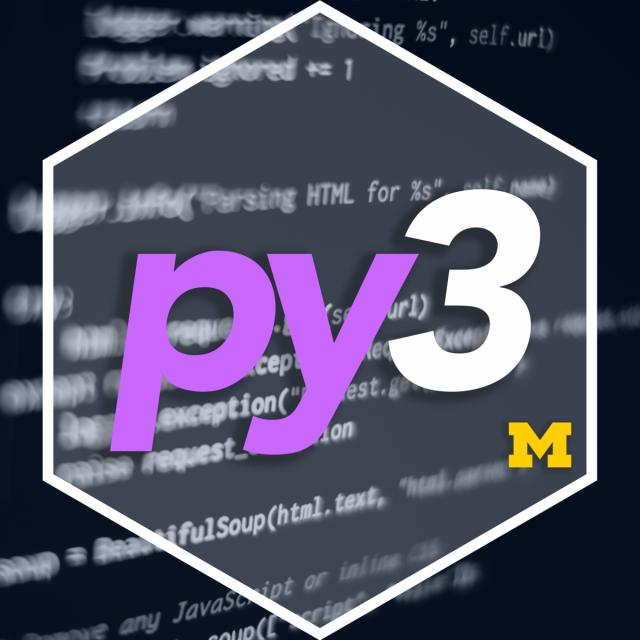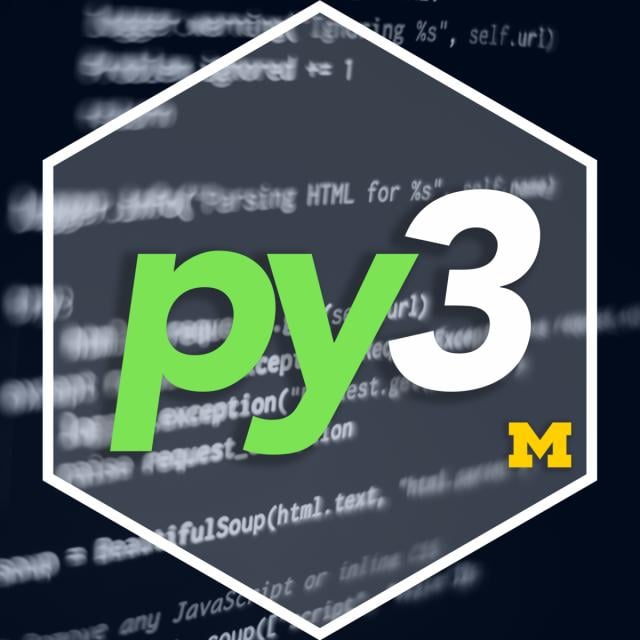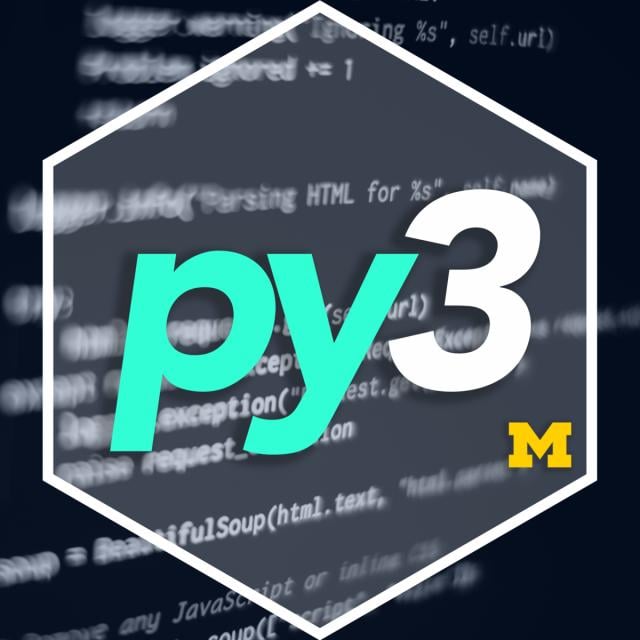Python 3 Programming Specialization
This specialization teaches the fundamentals of programming in Python 3. We will begin at the beginning, with variables, conditionals, and loops, and get to some intermediate material like keyword parameters, list comprehensions, lambda expressions, and class inheritance.
You will have lots of opportunities to practice. You will also learn ways to reason about program execution, so that it is no longer mysterious and you are able to debug programs when they don’t work.
By the end of the specialization, you’ll be writing programs that query Internet APIs for data and extract useful information from them. And you’ll be able to learn to use new modules and APIs on your own by reading the documentation. That will give you a great launch toward being an independent Python programmer.
This specialization is a good next step for you if you have completed Python for Everybody but want a more in-depth treatment of Python fundamentals and more practice, so that you can proceed with confidence to specializations like Applied Data Science with Python.
But it is also appropriate as a first set of courses in Python if you are already familiar with some other programming language, or if you are up for the challenge of diving in head-first.
WHAT YOU WILL LEARN
- How to inspect and understand APIs and third party libraries to be used with Python 3
- How to apply the Python imaging library (pillow) to open, view, and manipulate images, including cropping, resizing, recoloring, and overlaying text
- How to apply the python tesseract (py-tesseract) library with Python 3 in order to detect text in images through optical character recognition (OCR)
- How to apply the open source computer vision library (opencv) to detect faces in images, & how to crop and manipulate these faces into contact sheets





